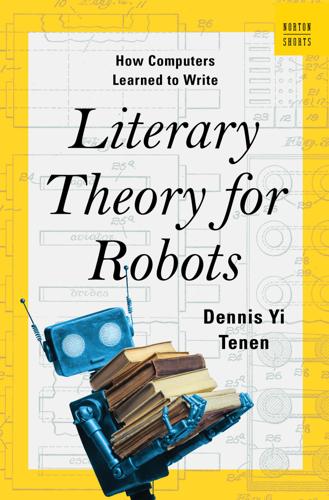
Literary Theory for Robots: How Computers Learned to Write
by
Dennis Yi Tenen
Published 6 Feb 2024
The connection between symbolic logic and commercial weaving wasn’t accidental. In 1832, still in the early days of the Difference Engine, Babbage issued a missive from Dorset Street. He called it a “direct consequence” of his work on the machine, compiled in preparation for a proposed lecture series at Cambridge. Titled On the Economy of Machinery and Manufactures, this lengthy tome contained a comprehensive study of all known industrial manufacturing processes. Reading it has significantly changed my perspective on the Analytical Engine. Where at first I saw it in the lineage of thought-manipulating machines, via Kircher and Leibniz, I could now also perceive its ambition on the scale of macroeconomics, in the broader context of the industrial age.
…
Menabrea and Ada Lovelace (1842), “Sketch of the Analytical Engine Invented by Charles Babbage Esq.” in Scientific Memoirs, Selected from the Transactions of Foreign Academics of Science and Learned Societies, and from Foreign Journals, ed. Richard Taylor (London: Richard and John Taylor, 1843), 666–731. Chapter 5: Template CULTURE 60 Within the gears: Menabrea and Lovelace, “Sketch of the Analytical Engine,” 666–731. 64 “It is here that the union”: Charles Babbage, On the Economy of Machinery and Manufactures (London: Charles Knight, 1832), 113. 66 check my receipts: Dennis Yi Tenen, “The Emergence of American Formalism,” Modern Philology 117, no. 2 (November 2019): 257–83. 68 Four subtypes were further enumerated: Georges Polti, The Thirty-Six Dramatic Situations, trans. Lucile Ray (Ridgewood, NJ: Editor, 1917), 30. 69 Further, rigorous experimentation was bound to change art: Polti, Thirty-Six Dramatic Situations, 129–43. 77 They were of limited horsepower: Arthur Sullivant Hoffman, The Writing of Fiction (New York: Norton, 1934), 40.
…
Index Abelson, Robert, 92 Aeronautical Laboratory (Cornell University), 110 Aesop, 94 agency, 127, 131–32, 141 Agnesi, Maria, 44 AI, See artificial intelligence AI and Data Ethics Institute, 131 Air Research and Development Command (US Air Force), 87 algebraic patterns, 55 algorithms, 9, 131 alignment problem, 38 alphabets, 43 Alphaville (film), 93 American Catalogue of Books in Print, 66 American Psychiatric Association, 23 American Stationer, 74 Analytical Engine (analytical engines), 48–52, 54–56, 60–61, 64 Andrews, Charlton The Technique of the Play Writing, 71 Appelbaum, Matthew, 92 applications, 32, 33 application tables, 48 Arabic language, 43 Arbogast, Louis, 44 Aristotelianism, 34, 36–38, 72 Aristotle, 36, 44 Poetics, 50–51, 67 Ars Brevis (Llull), 24, 31 artifice, 4, 61, 123 artificial intelligence (AI) in academia, 137–38 and agency, 141 as collective labor, 122–23 conversational AI, 135 and creative process, 133–34 dangers of, 127, 129, 137 definitions of, 4, 11 demystification of, 124 economic consequences of, 133–35 ethical, 22 gaps in thinking about, 5–7 history of, 12 “intelligence” aspect of, 14–16, 21, 125 language-based, 21, 46 and machine translation, 119 participants in, 132 personification of, 127, 130 purpose of, 59 and responsibility, 132 artificial intelligence (AI) (continued) scope of, 5, 16, 93, 128, 129 in social sphere, 127, 136, 139 and template culture, 83 assistive technology, 15, 28, 38–39, 123–24, 138 Athenaeum, 74 Austen, Jane, 65, 67 Author, 70 Author’s Digest, 71 Author’s Journal, 70 author wages, 67 automated assistants, 28, 138 Automated Reading of Cursive Script, 110 automated tasks, devaluation of, 38 automatic transmissions, 14–16 automation in industrial age, 2 of reason, 40 of work, 133–34 Babbage, Charles, 43, 48–54, 56, 59–60, 62–64, 71, 105, 118 On the Economy of Machinery and Manufactures, 60, 63–64, 71 Passages from a Life of a Philosopher, 49–50 backstories, 73 Bacon, Francis, 7, 10 Baidu, 113 Baker, George Pierce, 72–73 Baldur’s Gate, 100 Barrymore, John, 73 BASEBALL (story generator), 92 basic drives, 128 Baudot code, 7 Believe Me, Xantippe (film), 73 Bell Telephone Labs, 110 Benjamin, Walter, 61 Bibles, 39 Bibliothèque universelle de Genève, 54 bigrams, 106–7, 109 bits, 6–9 Blackburn, Simon, 84 Bledsoe, W.

Automation and the Future of Work
by
Aaron Benanav
Published 3 Nov 2020
Drawing on this insight—and adding that such a breakthrough now exists—automation theorists frequently argue that capitalism must be a transitory mode of production, which will give way to a new form of life that does not organize itself around wage work and monetary exchange.20 Automation may be a constant feature of capitalist societies; the same is not true of the theory of a coming age of automation, which extrapolates from instances of technological change to a broader account of social transformation. On the contrary, its recurrence in modern history has been periodic. Excitement about a coming age of automation can be traced back to at least the mid nineteenth century, with the publication of Charles Babbage’s On the Economy of Machinery and Manufactures in 1832, John Adolphus Etzler’s The Paradise within the Reach of All Men, without Labour in 1833, and Andrew Ure’s The Philosophy of Manufactures in 1835. These books presaged the imminent emergence of largely or fully automated factories, run with minimal or merely supervisory human labor.
…
See also South Africa expansion of nonstandard employment in, 54 unemployment benefits in, 122n27 universal basic income (UBI) and, 72 agents of change, 95–9 agriculture overcapacity in, 37–8 production and, 23–4 role of technology in, 41 AI (artificial intelligence), 7, 40, 116n35 Algeria, waves of strikes in, 96 apparel industry, 42–3 Argentina employment rates in, 53 piquetero movement, 98 waves of strikes in, 96 Aristotle, 83, 84 artificial intelligence (AI), 7, 40, 116n35 Asia capital accumulation in, 43 deindustrialization in, 21 employment landscape in, 50 expansion of nonstandard employment in, 54 job security in, 52–3 asymptomatic stagnation, 123–4n40 Australia, waves of strikes in, 96 Austria, out-of-work income maintenance/support in, 119–20n6 automation discourse about, ix–x, xi–xiii, 1–2 fears of, 5–8 labor undemand, 8–13 periodicity of, 8 principle propositions of, 2 solutions for, 65–6 automation technologies, 5–6 Autor, David, 9, 61 Babbage, Charles, 133–4n13 On the Economy of Machinery and Manufactures, 7–8 Babeuf, François-Noël, 85 Bangladesh, sewbots in, 43 Bank of Japan, 37 Banks, Iain M., 130n40 Culture series, 3, 130n40, 132n4 Bastani, Aaron, 5 Baumol, William, 57, 59–60, 123–4n40, 124n41 Bell, Daniel, 57 Bellamy, Edward, 1 Looking Backward, 86–7 Belle Epoque, 38–9 Beveridge, William, 69–70 Biagi law (2013), 52 Boggs, James, 8, 13 Brazil deindustrialization in, 108n22 employment rates in, 53 labor productivity growth in, 34 service sector employment in, 56, 97 Brecht, Bertolt, 81 Brenner, Robert, x, 24–5, 109n28, 110n32 Bretton Woods, 25 British National Health Service, 69–70 Brynjolfsson, Erik of labor-productivity growth, 17 The Second Machine Age, 2–3, 45 Cabet, Étienne on post-scarcity, 83, 84–5 Travels in Icaria, 84–5 call center sector, 118n48 Capital (Marx), 8, 47–8 capital disinvestment, 71 “A Capitalist Road to Communism” (van Parijs and van der Veen), 76, 95 capitalists, employment and, 128n19 capital productivity, 26 capital stock, 112n4 capital strike, 78–9 Carpenter, John They Live, x–xi, xi–xii Chile, waves of strikes in, 96 China deindustrialization in, 23 employment rates in, 28, 53, 54 labor productivity growth in, 33–4 nonming gong, 54 output growth in, 28 reindustrialization in, 22 robots in, 107n16 sewbots in, 43 waves of strikes in, 96 work relocation to, 42–3 Clarke, Arthur C., 119n2 Clinton, Bill, 4 Communist Manifesto (Marx and Engels), 85 Corkery, Michael, 103n15 cost disease, 60 counter-cyclical spending, era of, 67 creative destruction, 40 Culture series (Banks), 3, 130n40 currency, rise in value of European and Japanese, 36–7 Davis, Mike, 62 deindustrialization global growth of, 108n22 Rowthorn on, 107–8n21 Denmark, unemployment rates in, 47 deus ex machina, 83 Dewey, John, 85 digital technologies, ix–x disaggregation, of manufacturing-output growth rates, 19 dollar, value of, 110n32 domestic industry, 123n33 Du Bois, W.E.B., 85–6 economic bubbles, deflation of, 35–6 economic growth, 68 economic inequality, 120n11 economic stagnation, 112–3n6 edict of Eden, 1 education level, unemployment rates and, 49 Egypt, deindustrialization in, 108n22 electronics assembly, 42–3 employment about, 19 capitalists and, 128n19 nonstandard, 54–5 self-employment, 104n26 service sector, 56–7, 59–60, 105n1 underemployment, 11, 122–3n31 Endnotes collective, xii Engels, Friedrich Communist Manifesto, 85 Etzler, John Adolphus, 133–4n13 The Paradise within the Reach of All Men, without Labour, 7–8 Europe deindustrialization in, 21 job security in, 52–3 women’s labor force in, 52 European Central Bank, 37 Faberman, R.
…
(Frey and Osborne), 103n17 G7 economies, 9–10 G20 countries, reduction of public debt-to-GDP ratio in, 66–7 Gates Bill, 3 GDP (gross domestic product), 18–9, 112n1, 112n2, 115n26 Gelles, David, 103n15 Germany employment rates in, 53 GDP (gross domestic product) in, 112n2, 115n26 growth-rate statistics in, 18 Hartz IV reforms (2004), 52 imports to US from, 27 labor productivity growth in, 32–3 manufacturing capacity in, 25 manufacturing employment shares in, 28 Minijobs, 52 MVA in, 112n2 OECD index and, 50–1 robotization in, 28, 107n16 unemployment rates in, 46–7 US technology share with, 24 Gershuny, Jonathan, 57–9 global deindustrialization about, 15–6 manufacturing overcapacity, 22–8 productivity paradox, 16–22 waves of, 22, 26–7 global South, employment rates in, 53–4 Gordon, Robert J., 9 Gorz, André, 8 Greece, waves of strikes in, 96 Green Revolution, 41–2, 73 Greenspan, Alan, xi gross domestic product (GDP), 18–9, 112n1, 112n2, 115n26 Hägglund, Martin, 135n24 Hammond, James Henry, 83, 132n6 Hansen, Alvin, 69 Hartz IV reforms (2004), 52 Hayek, Friedrich, 73 Hong Kong, waves of strikes in, 96 “Humanity First” platform, 4 ICT (information and communications technology), 36–7 ILO (International Labour Organization), 55, 105n1 imports, to United States, 111n42 income gains in, 125n49 labor share of, 9–10, 61–2 income inequality, 62–3, 127n16 India deindustrialization in, 23 employment rates in, 53 labor productivity growth in, 34 Indonesia deindustrialization in, 108n22 waves of strikes in, 96 inequality income, 62–3, 127n16 increases in, 61–2 informal sector employment, 54 information and communications technology (ICT), 36–7 In Our Hands (Murray), 74–5 International Labour Organization (ILO), 55, 105n1 In Time (film), 123n32 Inventing the Future (Srnicek and Williams), xii, 4–5, 76 investment, private, 131n45 Iran, service sector employment in, 56 Iraq, waves of strikes in, 96 Italy Biagi law (2013), 52 employment rates in, 53 manufacturing capacity in, 25 OECD index and, 50–1 out-of-work income maintenance/support in, 119–20n6 public debt-to-GDP ratio in, 67 service sector employment in, 58 workforce statistics in, 41 IT sector, 118n48 Japan deindustrialization in, 21 employment rates in, 53 growth-rate statistics in, 18 imports to US from, 27 income growth in, 34–5 labor productivity growth in, 32–3 manufacturing capacity in, 25 manufacturing employment shares in, 28 OECD index and, 50–1 public debt-to-GDP ratio in, 67 robotization in, 28, 107n16 unemployment rates in, 46–7 US technology share with, 24–5 women’s labor force in, 52 workforce statistics in, 41 Japanification, x, 36 job creation, service sector and, 60–1 job security, 52–3 Joon-Ho, Bong, 62 Kalecki, Michal, 128n19 Keynes, John Maynard, 76, 103n20 Keynesian economics, 66–71, 127n15 Khrushchev, Nikita, 132n4 Kropotkin, Peter, 83, 85, 89 Kurzweil, Ray, 101n4 labor-augmenting technologies, 5–6 labor demand about, 45–6 global, 53–5 postindustrial levels, 56–64 skilled vs. unskilled, 87–8 unemployment rates, 46–53 labor market arbitrage of, 56 overcapacity and, 38–9 labor-productivity growth, x, 17 labor share, global measures of, 104n26 labor underdemand, 8–13, 43, 45–6, 78, 104n23 Lange, Oskar, 71, 128n21 Latin America deindustrialization in, 21 expansion of nonstandard employment in, 54 League of Nations, 127n16 Lebanon, waves of strikes in, 96 Leontief, Wassily, 7, 45 long downturn, x Looking Backward (Bellamy), 86–7 Lyft, 50 machine age, 2–5 manufacturing sector decline in employment growth in, 111n39 disaggregation of in France, 19–20 employment in, 16 falling price of, 124n41 global trade and, 114n22 growth rates in, 18, 20–1 size of, 106n9 Manufacturing Value Added (MVA), 112n1, 112n2, 114–5n23 Marcuse, Herbert, 8, 132–3n7 Marx, Karl Capital, 8, 47–8 Communist Manifesto, 85 concept of relative surplus population, 120n8 political development of, 133–4n13 on post-scarcity, 83, 84–5 stagnant economic sector concept, 57 Mason, Paul, 96–7 McAfee, Andrew of labor-productivity growth, 17 The Second Machine Age, 2–3, 45 Meidner Plan, 79 Meredith, Sam, 128–9n24 Mexico deindustrialization in, 23 service sector employment in, 56, 58 Minijobs, 52 mining industry, 117n45 MNCs (multinational corporations), 27 money, free, 72–6 Moore’s law, 40 More, Thomas on post-scarcity, 83, 89 Utopia, 82, 84 Morris, William, 132–3n7 mudsill theory, 132n6 multinational corporations (MNCs), 27 Murray, Charles In Our Hands, 74–5 Musk, Elon, 3 necessity, freedom and, 81–93 neoliberalism, 129n30 Neurath, Otto, 85 New Deal-style capital labor, 70–1 Nigeria, service sector employment in, 56 nitrogen capitalism, 42 nonming gong, 54 nonstandard employment, expansion of, 54–5 Obama, Barack, 3–4 Occupy Oakland, 115n30 OECD (Organisation for Economic Co-operation and Development). See Organisation for Economic Co-operation and Development (OECD) OECD index, 50–1, 53 offshoring, 17 omnia sunt communia principle, 84 On the Economy of Machinery and Manufactures (Babbage), 7–8 Organisation for Economic Co-operation and Development (OECD) about, 6, advocacy for deregulation of labor markets, 61–2 economic growth rates and, 68 union density and, 63–4 Osborne, Michael “The Future of Employment: How Susceptible Are Jobs to Computerization?
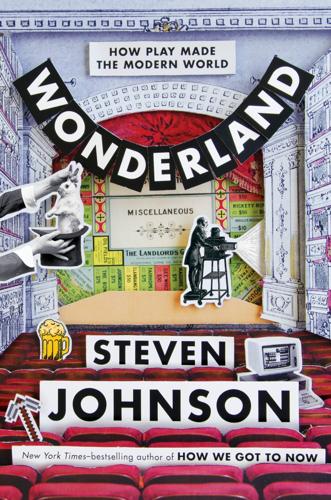
Wonderland: How Play Made the Modern World
by
Steven Johnson
Published 15 Nov 2016
He earns degrees in mathematics and astronomy as a young scholar, but maintains his interest in machines by studying the new factory systems that are sprouting across England’s industrial north. Almost thirty years after his visit to Merlin’s, he publishes a seminal analysis of industrial technology, On the Economy of Machinery and Manufactures, a work that would go on to play a pivotal role in Marx’s Das Kapital two decades later. Around the same time, Babbage begins sketching plans for a calculating machine he calls the Difference Engine, an invention that will eventually lead him to the Analytical Engine several years later, now considered to be the first programmable computer ever imagined.
…
227–30 artists as toolmakers, 175–81 Au Bonheur des Dames (Zola), 43–44 auditory illusions, 158–59, 165–66 automata clockworks, 6–7 Digesting Duck, 7, 79 flute player, 76–79 “Instrument Which Plays by Itself, The,” 73–76, 75 lifelike simulations of individual organisms, 7, 77 “Mechanical Turk,” 14 Writer, the, 7, 8 Babbage, Charles Analytic Engine, 10 Calculating Engine, 82 Difference Engine, 10, 14 On the Economy of Machinery and Manufactures, 10 inspired by Merlin’s Mechanical Museum, 9, 184, 284 interest in the technology of the Jacquard loom, 80–82 Baghdad (formerly Madinat al-Salam), 1–3 city design, 1–3 House of Wisdom (Bayt al-Hikma), 3 intellectual culture, 3–5 ball, importance of the, 210–15, 211, 212 Ballet Mécanique, 95–98 Balmat, Jacques, 263 Banu Musa, 3–5, 73–76 Banvard, John, 167, 172, 266 Barbon, Nicholas, 30 Barker, Robert, 5, 160–64, 167 baseball Cooperstown, New York, 199–200 lineage of, 199–200 Baudrillard, Jean, 273 Beethoven, Ludwig van, 166 Bellier-Beaumont, Ferréol, 129–30 Berry, Miles, 89 Birth of A Consumer Society, The (McKendrick, Brewer, and Plumb), 37 black belt, the, 33–34 Black Cat Tavern, 242–44 Black Death, 136–37 bodily humors, 134–35 bone flutes, 65–70, 66 Le Bon Marché, 41–46, 45 Book of Games of Chance, The (Cardano), 205, 207 Book of Ingenious Devices, The (Banu Masu), 3–5, 4, 73 Book of the Knowledge of Ingenious Mechanisms, The (al-Jazari), 2, 3–5 Boorstin, Daniel, 183 Boucicaut, Aristide, 40, 41–42, 48–49 Bradley, Milton, 195 Brand, Stewart, 219–20 Braudel, Fernand, 39–40 Brewer, John, 37 Brewster, David, 154–56, 156, 160 Brewster Stereoscope, 160 British East India Company, 28 British Magazine, 39 British Museum, 256–57 Brunelleschi, Filippo, 160, 175, 179 brutality of the Dutch regime Bandanese people of the Spice Islands, 119 Caribbean, 120, 120–21 Burrows, Edward G., 234 Burton, Mary, 235 “cabinet of wonders” (Wunderkammerns), 255–57, 256 caffeine as a memory enhancer, 247–48 as a natural weapon of the coffee plant, 247 calico “Calico Madams,” 28 made popular by window displays, 31 vivid colors of chintz and, 26–27, 27 capsaicin, 142 Cardano, Girolamo, 204, 205, 207–209, 222 Carlyle, Thomas, 153 casino games, 221–27 Caxton, William, 188 Cecil, William, 240 celebrities, 182–84 Cessolis, Jacobus de, 187–92, 194 chance.
…
See cinema Mumford, Lewis, 50 Murch, Walter, 175 murex snails sea voyages in search of, 18–19 source of Tyrian purple, 17–18, 19 music Ballet Mécanique, 95–98 boxes of the seventeenth and eighteenth centuries, 76 consonance vs. dissonance, 68 cultural invention vs. evolutionary adaptation, 69–72 drawing wave patterns to produce, 103–106 electronic, 101–106 experimental, 95–98 fourths and fifths, 67 intermedi, 83–85 origins of, 67 phonograph, 94–95 physics of intervals, 67–68 Steven Pinker, 70–71 pinned cylinder, 74–77 pursuit of innovation in, 72 Pythagorean tuning, 68 and ratios, 68 recorded, sharing, 106–107 tempo, 96–97 musical instruments bone flutes, 65–70, 66 “Instrument Which Plays by Itself, The,” 73–76, 75 of the Medici intermedi, 84–85 Oramics Machine, 102–106, 105 panharmonicon, 166 pianoforte, 88, 92 player piano, 89, 92–95, 93 natural selection, 269–70 nature as a relaxing escape, 260–66 Nossa Senhora dos Martires (“Pepper Wreck”), 115–16, 117 “novelty bonus” when perceiving new experiences, 281, 282 nutmeg, 113–15, 114, 122–25 Obama, Barack, 33–34 occult shows, 149–50 Oldenburg, Ray, 246 Olmsted, Frederick Law, 274 On Painting (Alberti), 160 On the Economy of Machinery and Manufactures (Babbage), 10 open-ended functionality of machines “Instrument Which Plays by Itself, The,” 75, 75–77 opium trade, 119 optical illusions, 155–56 Brewster Stereoscope, 160 Conflagration of Moscow, The, 164–66 evolutionary adaptations that allow, 174–75 eye as the source of most illusions, 157–58, 159 Kanizsa triangle, 157, 158 Kopfermann cube, 158, 158 linear perspective, 160–61 “Moving Panorama,” 167 Necker cube, 157–58, 158, 159 Panorama paintings, 160–64 persistence of vision, 172, 184 thaumatrope, 172, 174 zoetrope, 172 Oram, Daphne, 102–106, 105 Orlando, Florida, 274 outdoors, the Albert Smith’s Ascent of Mont Blanc (performance), 266 biophilia, 260 celebrated in art, 266 Claude glass, 265, 265–66 fear of wilderness, 260 Mont Blanc, 262–64 mountaineering, 262–64 national parks and wilderness preservation, 266 nature tourism, start of, 264–65 Horace-Bénédict de Saussure, 261, 262–64 Paccard, Michel, 263 panharmonicon, 166 Panorama paintings, 160–64, 162, 266 Parker Brothers, 199 Pascal, Blaise, 207–209 Patrickson, Thomas, 119 pepper biochemistry of, 142–43 Cookbook (Apicus), 118 as currency, 116 Natural History (Pliny the Elder), 118 Nossa Senhora dos Martires (“Pepper Wreck”), 115–16, 117 Queen Elizabeth I’s quest to acquire, 139–41 role in the fall of the Roman Empire, 118 perception, 159–60 Phantasmagoria, the, 150–55, 151 phase transitions, 181–82 Phenomenology of Spirit (Hegel), 151 Philidor, Paul, 149–50 Philipsthal, Paul de, 5, 154 phonograph, 94–95 Pilon, Mary, 195 Pinker, Steven, 70–71 piperine, 142–43 play encourages exploration and innovation, 73, 282 as insight into the future, 15 player piano concept of paying for new programming, 94 difficulties synchronizing more than one, 96–97 early versions, 89 pianola, 92–95, 93 pleasure, seeking, 71–73 “pleasuring grounds,” 274–76 Pliny the Elder, 118, 142 Plumb, J.
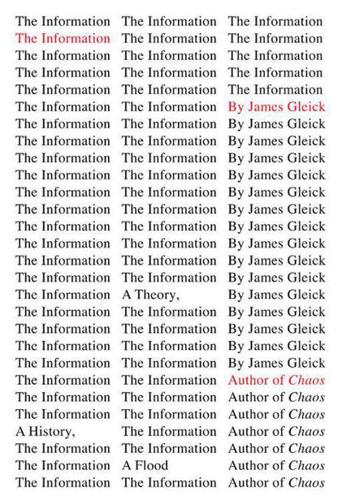
The Information: A History, a Theory, a Flood
by
James Gleick
Published 1 Mar 2011
TO THROW THE POWERS OF THOUGHT INTO WHEEL-WORK ♦ The original writings of Charles Babbage and, to a lesser extent, Ada Lovelace are increasingly accessible. The comprehensive, thousand-dollar, eleven-volume edition, The Works of Charles Babbage, edited by Martin Campbell-Kelly, was published in 1989. Online, the full texts of Babbage’s Passages from the Life of a Philosopher (1864), On the Economy of Machinery and Manufactures (1832), and The Ninth Bridgewater Treatise (1838) can now be found in editions scanned from libraries by Google’s book program. Not yet available there (as of 2010), but also useful, is his son’s volume, Babbage’s Calculating Engines: Being a Collection of Papers Relating to Them (1889).
…
As for the Lovelace letters and papers, they are in the British Library, the Bodleian, and elsewhere, but many have been published by Betty Alexandra Toole in Ada: The Enchantress of Numbers (1992 and 1998); where possible I try to cite the published versions. ♦ “LIGHT ALMOST SOLAR HAS BEEN EXTRACTED”: Charles Babbage, On the Economy of Machinery and Manufactures (1832), 300; reprinted in Science and Reform: Selected Works of Charles Babbage, ed. Anthony Hyman (Cambridge: Cambridge University Press, 1989), 200. ♦ THE TIMES OBITUARIST: “The Late Mr. Charles Babbage, F.R.S.,” The Times (London), 23 October 1871. Babbage’s crusade against organ-grinders and hurdy-gurdies was not in vain; a new law against street music in 1864 was known as Babbage’s Act.
…
Dodge, “Charles Babbage,” Smithsonian Annual Report of 1873, 162–97, reprinted in Annals of the History of Computing 22, no. 4 (October–December 2000), 20. ♦ NOT “THE MANUAL LABOR OF ROWING”: Charles Babbage, Passages from the Life of a Philosopher (London: Longman, Green, Longman, Roberts, & Green, 1864), 37. ♦ “ ‘THE TALL GENTLEMAN IN THE CORNER’ ”: Ibid., 385–86. ♦ “THOSE WHO ENJOY LEISURE”: Charles Babbage, On the Economy of Machinery and Manufactures, 4th ed. (London: Charles Knight, 1835), v. ♦ HE COMPUTED THE COST OF EACH PHASE: Ibid., 146. ♦ “AT THE EXPENSE OF THE NATION”: Henry Prevost Babbage, ed., Babbage’s Calculating Engines: Being a Collection of Papers Relating to Them; Their History and Construction (London: E. & F.
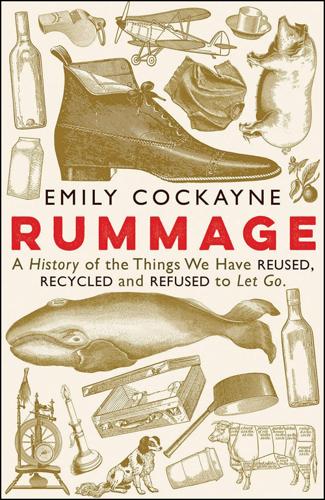
Rummage: A History of the Things We Have Reused, Recycled and Refused To Let Go
by
Emily Cockayne
Published 15 Aug 2020
John Lawrence Hammond and Barbara Bradby Hammond, The Village Labourer, 1760–1832 (London, 1913), p. 116. 14. James Mill (ed.), review of Malcolm’s Agriculture of Surrey, in Literary Review 1:5 (May 1806), p. 485. 15. Board of Agriculture, On the Subject of Manures (London, 1795); Frederick Falkner, The Muck Manual (London, 1843), p. 106. 16. Charles Babbage, On the Economy of Machinery and Manufacture, 4th edn (London, 1846), p. 218. 17. ‘Agricultural Chemistry’, Chester Chronicle, 28 January 1814, p. 4; Falkner, Muck Manual, p. 95. 18. ‘At the Durham Assizes’, Oxford University and City Herald, 20 April 1811, p. 4. 19. Falkner, Muck Manual, p. 95; ‘Soot Manure’, Chester Courant, 30 October 1821, p. 4; ‘Universal Chimney Doctor’, Stamford Mercury, 26 January 1827, p. 3. 20.
…
David Barnett, ‘The Structure of Industry in London 1775–1825’, unpublished PhD thesis, Nottingham University, 1996, p. 187; BM, Prints & Drawings, Banks, 70, 49, trade card of Robert Ledger; James Raven, Publishing Business in Eighteenth Century England (Woodbridge, 2014), p. 61; ‘Buckram Manufactory, London’, Norfolk Chronicle, 15 November 1788, p. 3. 28. Simmonds, Waste Products, p. 19; Charles Babbage, On the Economy of Machinery and Manufacture, 4th edn (London, 1846), p. 11. 29. Larvik Museum, Norway, trunk by Henry Nickles, https://digitaltmuseum.no/021026961918/kiste 30. Bodleian Library, Oxford, Trade Cards 28(54), Samuel Pratt, trunk-maker. 31. Mary Thale (ed.), Autobiography of Francis Place (London, 1972), pp. 47–9. 32.
…
Talbot, Millions from Waste, pp. 19, 32, 35; see also Thomas Greenwood, ‘The Utilisation of Waste II’, Leisure Hour, 35, October 1886, pp. 707–9. 18. Ian Buxton and Ian Johnston, Battleship Builders (Barnsley, 2013), p. 306. 19. Michael Thompson, Rubbish Theory (originally 1979, reprint edn, London, 2017), p. 115. 20. Babbage, On the Economy of Machinery and Manufacture, pp. 148–9. 21. ‘London’, Hampshire Chronicle, 23 May 1803, p. 2. See also ‘Gathering Up the Fragments’, Kirkintilloch Herald, 3 April 1918, p. 7. See, for example, Thomas Tusser, A Hundreth Good Pointes of Husbandry (London, 1570), fol. 33v. 22. Strasser, Waste and Want. 23.
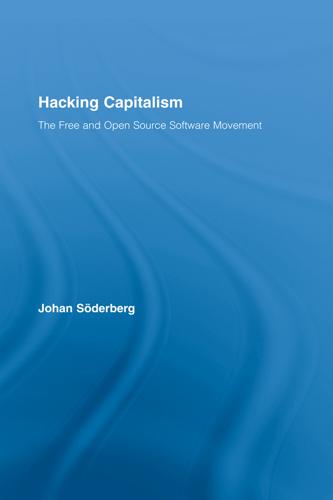
Hacking Capitalism
by
Söderberg, Johan; Söderberg, Johan;
He envisioned the world’s first computer, the Difference Engine, and incorporated Jacquard’s punched card system in his second attempt to build a computer, the Analytical Engine. These machines were intended to replace the personnel, at the time known as ‘computers’, who were then employed to calculate mathematical tables. In addition to figuring out the principles of computing, Charles Babbage was also a pioneer in writing management literature. In On the Economy of Machinery and Manufactures, published in 1832, he advised factory owners how to break up the labour process into simple tasks that could be operated by workers with the least possible skills. His deep understanding of technology did not fail him when assessing the expediency of machinery on the factory shop-floor: “One great advantage which we may derive from machinery is from the check which it affords against the inattention, the idleness, or the dishonesty of human agents.”9 Charles Babbage’s words inadvertently point to the antagonistic relation between labour and capital that computing has grown out of.
…
Linus Torvalds and David Diamond, Just For Fun—The Story of an Accidental Revolutionary (New York: HarperCollins Publisher, 2001); hereafter cited in text. 8. ed. Elizabeth Wilkinson & L. Willoughby, On the Aesthetic Education of Man—In a Series of Letters/Friedrich Schiller (Oxford: Clarendon Press 1982), 9; hereafter cited in text as Letters. 9. Charles Babbage, On the Economy of Machinery and Manufactures (New York: Augustus M Kelley Publishers, 1971), 54. 10. Jason Scott, BBS the Documentary (2004). 11. Andrew Sullivan, “Counter Culture: Dot-communist Manifesto”, New York Times (Sunday 11, June 2000). 12. Slavoj Zizek, “A Cyberspace Lenin: Why Not?”, International Socialism Journal 95, (summer 2002). 13.
…
Thomas Jefferson—Political Writings, New York: Cambridge University Press, 1999. ed. Arato, Andrew and Eike Gebhardt, The Essential Frankfurt School Reader (New York: Continuum, 1998). Axelos, Kostas. Alienation, Praxis, and Techné in the Thought of Karl Marx, Austin: University of Texas Press, 1976. Babbage, Charles. On the Economy of Machinery and Manufactures, New York: Augustus M Kelley Publishers, 1971. Baden, John, and Douglas Noonan. Managing the Commons, London: Indiana University Press, 1998. ed. Balakrishnan, Gopal. Debating Empire, London: Verso, 2003. Barabási, Albert-László. Linked—The New Science of Networks, Cambridge Mass.: Perseus Publishing, 2002.

The Dawn of Innovation: The First American Industrial Revolution
by
Charles R. Morris
Published 1 Jan 2012
Swade notes that Babbage never considered the cost-benefit aspect of his great projects, assuming that government officials would be as drawn as he was to “ingenuity, intricacy, mastery of mechanism, and the seductive appeal of control over number.”37 Babbage was undoubtedly at the extreme end of other-worldliness, but he had a large and responsive audience. A book he published in 1833, On the Economy of Machinery and Manufacturing,38 has an arid, academic tone; the first third is an exhaustive classification of machines as those for “Accumulating Power,” “Regulating Power,” “Extending the Time of Action of Forces,” and much else in that vein. Yet the first printing of 3,000 copies was sold out within a few weeks, and there were two more editions the next year.
…
(New York: Dover, 1961), 346–354, quote at 351, plates at 380–384. 32 Swade, personal communication. 33 Babbage, Passages, 452. 34 The account here is from Swade, “A Modern Sequel,” Part 3 in Difference Engine. 35 Swade, Difference Engine, 292. 36 Ibid., 305. Note that Swade and his team did not attempt to make Babbage’s printer, which was of the same size and complexity of the DE2 itself. 37 Ibid., 201. 38 Charles Babbage, On the Economy of Machinery and Manufacturing (London: John Murray, 1846). 39 Joseph Bizup, Manufacturing Culture: Vindications of Early Victorian Industry (Charlottesville: University of Virginia Press, 2003), 8. 40 Ibid., 150. 41 The most detailed available history and analyses are Carolyn C. Cooper, “The Portsmouth System of Manufacture,” Technology and Culture 25, no. 2 (April 1984): 182–225, and Carolyn C.
…
Newton, Isaac Niagara Niagara campaign Niagara River Suspension Bridge Niles, Hezekiel Niles Weekly Register Nobel brothers Nortel North, Simeon(fig.) contract for pistol making by North Star Northern Pacific Railroad Novelty Works Nugent, “Mountain Jim,” Nutrition, work output and O’Conor, Richard Ohio River hog processing and On the Economy of Machinery and Manufacturing (Babbage) Oneida Organization Pacific Pacific Railway Act (1862) Paper handling Papin, Denis Paris Exposition (1857) Parsons, Charles Parts problems with Party Politburo Patent Arms Manufacturing Company Patent law Patent Office Patents claim-jumping intellectual property and litigation over managing Pawtucket Canal Pearson, John Peddlers Pendulums Pennsylvania Railroad Percy, Henry Perkins, Jacob Perry Perry, Oliver Hazard Peterson Institute Philadelphia-Germantown Railroad Phonographs Pigou, trade restriction and Pike Pike, Zebulon Pillsbury Pistols contract for making Politics Pollution Pomeroy, Lemuel Popplewell, Frank Population growth(table) Porkopolis Portage Railroad Porter, Edward Porter, Levi Portsmouth block-making factory Postcards Potemkin, Grigory Alexandrovich Precision Prescott, Benjamin Prevost, George Chauncey and on St.

Behemoth: A History of the Factory and the Making of the Modern World
by
Joshua B. Freeman
Published 27 Feb 2018
And even then, what by the standards of the day could be considered very large factories—mills employing over a thousand employees—were the exception, not the rule, in both urban and rural settings.25 But the very large mills received a disproportionate amount of attention, both at the time and since, because they were seen as the cutting edge of not only industry and technology but also of social arrangements.26 Why did the owners of these facilities choose to go big, to adopt the large, centralized factory model? Charles Babbage, the great English mathematician and inventor, devoted a whole chapter “On the Causes and Consequences of Large Factories” in his influential 1832 book, On the Economy of Machinery and Manufacturers. Babbage began with the obvious, that the introduction of machinery tended to lead to greater production volume, resulting in “the establishment of large factories.” A leading student of the division of labor, he contended that efficient production units had to be multiples of the number of workers needed for the most efficient division of labor in a particular production process.
…
Gatrell, “Labour, Power, and the Size of Firms in Lancashire Cotton in the Second Quarter of the Nineteenth Century,” Economic History Review, new series, vol. 30, no. 1 (Feb. 1977), 96, 98, 112; Jenkins, “Introduction,” xv. 26.Berg, Age of Manufactures, 23–24; Thompson, Making of the English Working Class, 208–11; Robert Gray, The Factory Question and Industrial England, 1830–1860 (Cambridge: Cambridge University Press, 1996), 3–4. 27.Charles Babbage, On the Economy of Machinery and Manufacturers, 4th ed. (London: Charles Knight, 1835), 211–23. 28.Gatrell, “Labour, Power, and the Size of Firms,” 96–97, 108; Alfred Marshall, Principles of Economics (1890; London: Macmillan and Co., Ltd., 1920), 8th ed., IV.XI.7, http://www.econlib.org/library/Marshall/marP25.html#Bk.IV,Ch.XI. 29.Baines, History of the Cotton Manufacture, 184–85. 30.Landes, Unbound Prometheus, 41; Jones, “Technology, Transaction Costs, and the Transition to Factory Production,” 71–74; Jenkins, “Introduction,” xiii; Berg, Age of Manufactures, 23–24, 190, 246; Hudson, Genesis of Industrial Capital, 70–71.
…
See names of specific locations New York Times (newspaper), 194, 200 New York Times Sunday Magazine, 217 New York World’s Fair (1939), 215, 363n Newcastle, England, 96 Newhouse, Edward, 161 Newport News Shipbuilding and Drydock Company, 186 New-York Daily Tribune (newspaper), 58–59, 66 Niagara Falls Power Company, 150 Nike, 273, 292–94, 296, 304, 307, 396n Nishimura, Koichi, 293 Nissan, 248 Nizhny Novgorod, Soviet Union, 171, 190–93, 199 Nizhny Tagil, Soviet Union, 201, 212, 374n, 379n Nkrumah, Kwame, xii, 256 NKVD (formerly GPU), 203–4 nonfactory production, 4–6, 9, 32 North American Aviation, 238 North River (steamboat), 82–83 Nottingham, England, 7–8, 328n Nottinghamshire, England, 36 Nová Ostrava, Czechoslovakia, 249 Nowa Huta, Poland, 249, 251–65, 253, 255, 314, 387n Oastler, Richard, 26 O’Hare, Kate Richards, 145–46 Ohio. See names of specific locations oil industry, 277–78, 290 Olds Motor Works, 123 Olmsted, Frederick Law, 104–5 Omaha, Nebraska, 85 On the Economy of Machinery and Manufacturers (Babbage), 10–11 O’Neill, Eugene, 150 organzine industry, 2–3 Orjonikidje, Sergo, 198, 200, 220 Otis Elevator, 239 Otis Steel, 149–50 Ottoman Empire, 5, 329n outsourcing, 291–96 Overman, Frederick, 89 Owen, Robert, 24, 26 Ozersk, Soviet Union, 246 Packard Motor Company, 133, 137, 362n painting, 86, 148, 151–59, 157, 366n Palace of the Soviets (Moscow, Soviet Union), 230 Panama-Pacific International Exposition (1915), 144–45 panopticon, 17 paper industry, 72 “Paradise of Bachelors and the Tartarus of Maids, The” (Melville), 72 Paris, France, 85–88, 100 Parsons, Talcott, 227 Partisan Review (magazine), 161 patents and patent royalties, 3, 7, 9, 54, 190, 343n, 346n Pawtucket, Rhode Island, 45, 66 Pawtucket Falls, 51 PBM Mariner flying boats, 232 Pearl River Delta, China, 282–83 Pegatron Corporation, 273, 296, 310, 322 Pellerin, Cora, 76 Pelton, O., 55 Pemberton Mill, 76–77, 79, 349n Pennsylvania, 46.

The Technology Trap: Capital, Labor, and Power in the Age of Automation
by
Carl Benedikt Frey
Published 17 Jun 2019
.… [N]owhere do we find a more shameful squandering of human labour-power for the most despicable purposes than in England, the land of machinery.”29 Overall, machinery critics of the Victorian Age raised more questions than they answered. Yet they prompted defenders of mechanization—including Charles Babbage, Andrew Ure, and Edward Baines—to make a case for it. Babbage’s On the Economy of Machinery and Manufactures presents machines as a helpful complement to the worker’s labor, suggesting that “various operations occur in the arts in which an assistance of an additional hand would be a great convenience to the workman, and in these cases tools or machines of the simplest structure come to our aid.… The discovery of the expansive power of steam [has] already added to the population of this small island, millions of hands.”30 And in addition to making workers more productive, Ure declared that it was only with the spread of machines that new and better-paying jobs could be created, allowing ordinary people to climb the economic ladder: Instead of repining as they have done at the prosperity of their employers … good workmen would have advanced their condition to that of overlookers, managers, and partners in new mills, and have increased at the same time the demand for their companions’ labour in the market.
…
Gaskell, 1833, The Manufacturing Population of England, Its Moral, Social, and Physical Conditions (London: Baldwin and Cradock), 16. 27. Landes, 1969, The Unbound Prometheus, 2. 28. P. Gaskell, 1833, The Manufacturing Population of England, 12 and 341. 29. Marx, [1867] 1999, Das Kapital , chapter 15, section 5. 30. C. Babbage, 1832, On the Economy of Machinery and Manufactures (London: Charles Knight), 266–67. 31. A. Ure, 1835, The Philosophy of Manufactures (London: Charles Knight), 220. 32. E. Baines, 1835, History of the Cotton Manufacture in Great Britain (London: H. Fisher, R. Fisher, and P. Jackson), 452. 33. Ibid., 460. 34. Ibid., 435. 35.
…
The Electoral Consequences of Rising Trade Exposure.” Working Paper 22637, National Bureau of Economic Research, Cambridge, MA. Autor, D. H., F. Levy, and R. J. Murnane. 2003. “The Skill Content of Recent Technological Change: An Empirical Exploration.” Quarterly Journal of Economics 118 (4): 1279–333. Babbage, C. 1832. On the Economy of Machinery and Manufactures. London: Charles Knight. Bacci, M. L. 2017. A Concise History of World Population. Oxford: John Wiley and Sons. Baines, E. 1835. History of the Cotton Manufacture in Great Britain. London: H. Fisher, R. Fisher, and P. Jackson. Bairoch, P. 1991. Cities and Economic Development: From the Dawn of History to the Present.

Blood in the Machine: The Origins of the Rebellion Against Big Tech
by
Brian Merchant
Published 25 Sep 2023
Charles Babbage, the inventor of the schema for one of the first modern computers, would declare that his difference engine could be used to computerize the entire factory system. (In an ironic twist, Lord Byron’s estranged daughter, Ada Lovelace, would write history’s first software programs by expanding on Babbage’s work.) In 1832, Babbage published On the Economy of Machinery and Manufactures, which argued that factories and machinery were the great drivers of prosperity. It helped launch a trend of books known as factory guides, tomes intended to drum up public support for the institution at a time of gathering doubts, and to extol the virtues of the machinery that made them possible.
…
Garden City, NY: Doubleday; London: Weidenfeld and Nicolson, 1973. Armstrong, Isobel, and Virginia Blain, eds. Women’s Poetry in the Enlightenment: The Making of a Canon, 1730–1820. London: Palgrave Macmillan, 1999. Axon, William Edward Armytage. Lancashire Gleanings. London, 1883. Babbage, Charles. On the Economy of Machinery and Manufactures. London: Charles Knight, 1832. Bailey, Brian. The Luddite Rebellion. New York: New York University Press, 1998. Ball, Charles. Slavery in the United States: A Narrative of the Life and Adventures of Charles Ball, a Black Man, Who Lived Forty Years in Maryland, South Carolina and Georgia, as a Slave, Under Various Masters, and Was One Year in the Navy with Commodore Barney, During the Late War.

Prediction Machines: The Simple Economics of Artificial Intelligence
by
Ajay Agrawal
,
Joshua Gans
and
Avi Goldfarb
Published 16 Apr 2018
Tim Harford, The Undercover Economist Strikes Back: How to Run—or Ruin—an Economy (New York: Riverhead Books, 2014). 20. Dayong Wang et al., “Deep Learning for Identifying Metastatic Breast Cancer,” Camelyon Grand Challenge, June 18, 2016, https://arxiv.org/pdf/1606.05718.pdf. 21. Charles Babbage, On the Economy of Machinery and Manufactures (London: Charles Knight Pall Mall East, 1832), 162. 22. Daniel Paravisini and Antoinette Schoar, “The Incentive Effect of IT: Randomized Evidence from Credit Committees,” working paper 19303, National Bureau of Economic Research, August 2013. 23. Such “first pass” division of labor is being seen in many prediction machine deployments.
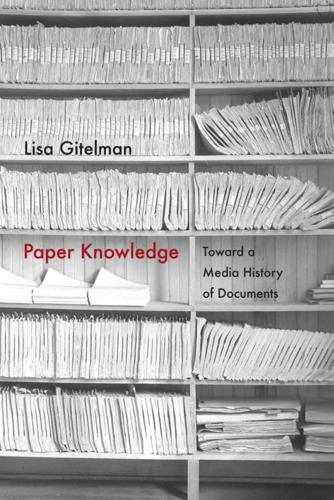
Paper Knowledge: Toward a Media History of Documents
by
Lisa Gitelman
Published 26 Mar 2014
In this account of circulation, mobility, and inertia, I have been influenced by N OT E S TO C H A P T E R O N E 157 4. 5. 6. 7. 8. 9. 10. 158 the work of Will Straw (see, for example, “Embedded Memories,” in Residual Media, ed. Charles R. Acland [Minneapolis: University of Minnesota Press, 2007], 3–31). Conversations with Michael Winship helped clarify this account of repetition. Charles Babbage, On the Economy of Machinery and Manufactures, 4th ed. (London: Charles Knight, 1835), 191; see Martin Campbell-Kelly, “Informational Technology and Organizational Change in the British Census, 1801–1911,” Information Systems Research 7 (March 1996): 22–36. In chapter 2 of The Demon of Writing: Powers and Failures of Paperwork (New York: Zone, 2012), Ben Kafka explains how Emmanuel Joseph Sieyès worked this principle out in advance of Babbage as a theory of government.
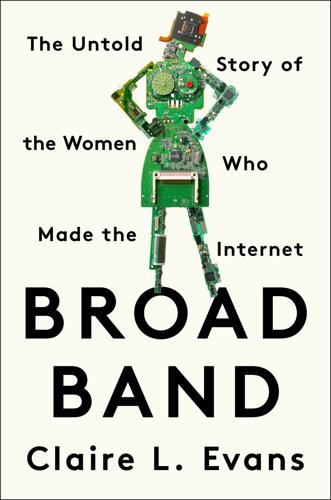
Broad Band: The Untold Story of the Women Who Made the Internet
by
Claire L. Evans
Published 6 Mar 2018
Notes CHAPTER ONE: A COMPUTER WANTED “A Computer Wanted,” it says: “A Computer Wanted,” New York Times, May 2, 1892. original cottage industry: James Gleick, The Information: A History, A Theory, A Flood (New York: Vintage Books, 2012), 84. offices of his time did “mental labor”: Charles Babbage, On the Economy of Machinery and Manufactures (London: Charles Knight, Pall Mall East, 1832), 153. mathematicians would guesstimate their horsepower: David Alan Grier, When Computers Were Human (Princeton, NJ: Princeton University Press, 2005), 276. “the visible pattern” of any cloth: Sadie Plant, Zeroes + Ones: Digital Women and the New Technoculture (London: Fourth Estate, 1998), 66.

Rage Inside the Machine: The Prejudice of Algorithms, and How to Stop the Internet Making Bigots of Us All
by
Robert Elliott Smith
Published 26 Jun 2019
Babbage realized that all industrial machines have a similar structure: they require designers and operators at one end, making sure that the machine is set up to perform the required tasks; in the middle they displaced artisanal jobs by executing simple, repetitive operations; and at the end they turn out products at a rate that had never been seen before. Babbage captured his division of labour and work-flow theories in his popular 1832 book On the Economy of Machinery and Manufactures. It is arguable that this book, rather than his un-completed computer engines, contains his most impactful legacy. In it, he transformed Smith’s theory of the division of labour from a mere observation to a design tool for the economic future of the world. He did so by articulating the mathematical advantages for production afforded by specialization of tasks, and the related design of systems of human work in factory flows.
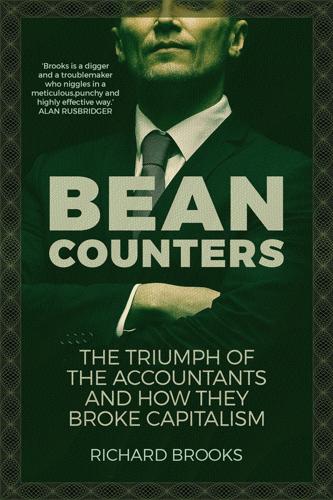
Bean Counters: The Triumph of the Accountants and How They Broke Capitalism
by
Richard Brooks
Published 23 Apr 2018
This breaks down into: £31bn strategy consulting; $71bn operational consulting; $70bn financial consulting; $31bn HR consulting; $48bn technology consulting. 2. Cited in Trevor Boyns, John R. Edwards and Marc Nitiken, The Birth of Industrial Accounting in Britain and France, Routledge, 2013. 3. On the Economy of Machinery and Manufactures, 1832, cited in Chatfield and Vangermeersch. 4. MacDonald, The Firm. 5. Higgins, The First Sixty Years. 6. Ibid. 7. Brewster. 8. Ibid. 9. MacDonald. The term ‘contractor state’ was coined by Christopher McKenna in The World’s Newest Profession, Cambridge University Press, New York, 2006. 10.

Darwin Among the Machines
by
George Dyson
Published 28 Mar 2012
Taylor, 1843), reprinted in Henry Provost Babbage, ed., Babbage’s Calculating Engines: Being a Collection of Papers Relating to them; their History, and Construction (London: E. and F. Spon, 1889), 25. Facsimile reprint, Charles Babbage Institute Reprint Series for the History of Computing, vol. 2 (Cambridge, Mass.: MIT Press, 1982). 25.Babbage, Ninth Bridgewater Treatise, 97. 26.Ibid., vii. 27.Charles Babbage, On the Economy of Machinery and Manufactures, 4th ed., enlarged (London: Charles Knight, 1835), 273–276. 28.Babbage, Passages, 128. 29.George Boole, An Investigation of the Laws of Thought, on which are founded the mathematical theories of Logic and Probabilities (London: Macmillan, 1854), 1. 30.Herman Goldstine, The Computer from Pascal to von Neumann (Princeton, N.J.: Princeton University Press, 1972), 153. 31.John von Neumann, “Probabilistic Logics and the Synthesis of Reliable Organisms from Unreliable Components,” in Claude E.

In Our Own Image: Savior or Destroyer? The History and Future of Artificial Intelligence
by
George Zarkadakis
Published 7 Mar 2016
His Demonstrator was a device capable of solving mechanically traditional syllogisms, numerical syllogisms and elementary probability problems. 3Morris, I. (2010), Why the West Rules–For Now: The Patterns of History, and What They Reveal About the Future. New York: Farrar, Straus and Giroux. 4These are the four measures that Ian Morris uses to construct his ‘Human Social Development Index’: energy capture, organisation, war-making capacity and information technology. 5Babbage, C. (1835), On the Economy of Machinery and Manufactures (4th edition). London: Charles Knight. 6What is also significant about recursive functions such as difference functions is that they describe complex, chaotic behaviours when the relation between the two variables computed is non-linear. When finite differences between the parameters of a difference equation become infinitesimal, then the equations are called ‘differential’ and are fundamental to calculus. 7Difference Engine No. 2 was reconstructed under Doron Swade, the then Curator of Computing at the London Science Museum.
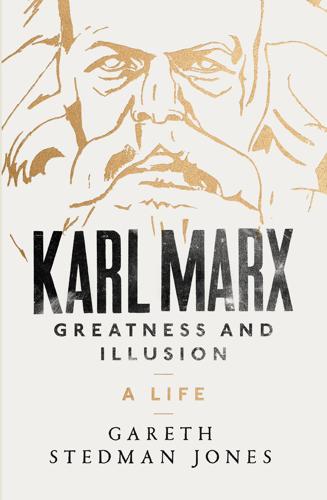
Karl Marx: Greatness and Illusion
by
Gareth Stedman Jones
Published 24 Aug 2016
Heinrich Bürgers, Ernst Dronke, Friedrich Engels, Ferdinand Freiligrath, Georg Weerth, Ferdinand Wolff, Wilhelm Wolff), Glashütten im Taunus, Verlag Detlev Auvermann KG, 1973) PRIMARY SOURCES Annenkov, Pavel V., The Extraordinary Decade: Literary Memoirs, ed. Arthur P. Mendel, Ann Arbor, University of Michigan Press, 1968 [1881] Babbage, Charles, On the Economy of Machinery and Manufactures, London, Charles Knight, 1832 Bachofen, Johann Jakob, Das Mutterrecht, Stuttgart, Krais and Hoffman, 1861 Bakunin, Michael, Statism and Anarchy¸ trans. and ed. Marshall S. Shatz, Cambridge, Cambridge University Press, 1990 [1873] Bauer, Bruno, Briefwechsel zwischen Bruno Bauer und Edgar Bauer während der Jahre 1839–1842 aus Bonn und Berlin, Charlottenburg, Egbert Bauer, 1844 ———, The Trumpet of the Last Judgement against Hegel the Atheist and Anti-Christ: An Ultimatum, trans.
…
Karl Marx, Economic Manuscripts of 1857–58 (Grundrisse), MECW, vol. 28, p. 523. 16. Andrew Ure, The Philosophy of Manufactures: or, An Exposition of the Scientific, Moral and Commercial Economy of the Factory System of Great Britain, London, Charles Knight, 1835; Charles Babbage, On the Economy of Machinery and Manufactures, London, Charles Knight, 1832. 17. Marx, Economic Manuscripts of 1857–58, p. 131. 18. Ibid., p. 133. 19. Ibid., p. 134 (capitals in original text). 20. Ibid., vol. 28, p. 230. 21. Ibid., p. 334. 22. Adam Smith, An Inquiry into the Nature and Causes of the Wealth of Nations, ed.
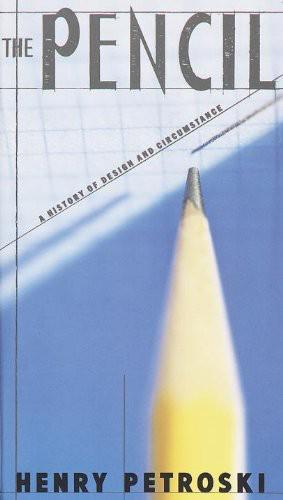
The Pencil: A History of Design and Circumstance
by
Henry Petroski
Published 2 Jan 1990
Atkin, William K., Raniero Corbelletti, and Vincent R. Fiore. Pencil Techniques in Modern Design. New York, 1953. Austen, Jane. Emma. Edited with an introduction by David Lodge. London, 1971. Automatic Pencil Sharpener Company. “From Kindergarten Thru College.” [Folder.] Chicago, [1941]. Babbage, Charles. On the Economy of Machinery and Manufactures. 4th edition enlarged (1835). New York, 1963. Back, Robert. “The Manufacture of Leads for the Mechanical Pencil,” American Ceramic Society Bulletin, 4 (November 1925): Baker, Joseph B. “The Inventor in the Office,” Scientific American, October 29, 1910: 344–45. Banister, Judith.

Your Computer Is on Fire
by
Thomas S. Mullaney
,
Benjamin Peters
,
Mar Hicks
and
Kavita Philip
Published 9 Mar 2021
This was perhaps the first industrial-era information factory, but it was a harbinger of subsequent developments to come.36 Several decades after de Prony, the English mathematician and astronomer Charles Babbage, faced with a similar need to quickly and efficiently generate large numbers of mathematical tables, also turned to contemporary industrial manufacturing practices. After making an extended tour of European industrial centers, he published On the Economy of Machinery and Manufactures, the most comprehensive study of industrialization to date. By that point, the focus of industrial development had turned from the division of labor to water-driven mechanization. Babbage adapted de Prony’s method of differences to this new industrial regime and in the latter half of the 1820s designed his Difference Engine, which was explicitly modeled after a contemporary industrial granary.
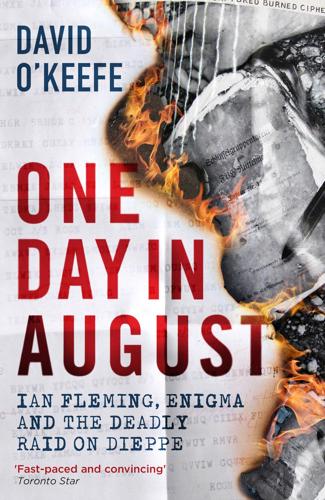
One Day in August: Ian Fleming, Enigma, and the Deadly Raid on Dieppe
by
David O’keefe
Published 5 Nov 2020
Dieppe: Tragedy to Triumph. Toronto: McGraw-Hill Ryerson, 1992. Zuehlke, Mark. Tragedy at Dieppe: Operation Jubilee, August 19, 1942. Vancouver: Douglas and McIntyre, 2012. CRYPTOGRAPHY AND BLETCHLEY PARK Aldrich, J. Richard. GCHQ. London: HarperCollins, 2010. Babbage, Charles. On the Economy of Machinery and Manufactures. 1832. Babbage, Charles. Reflections on the Decline of Science in England. 1830. ——. The Writings of Charles Babbage. Houston, TX: Halcyon Press, 2009. Kindle edition. Carter, Frank. Breaking Naval Enigma: An Account of the Additional Problems Encountered and the Methods Used to Solve Them.